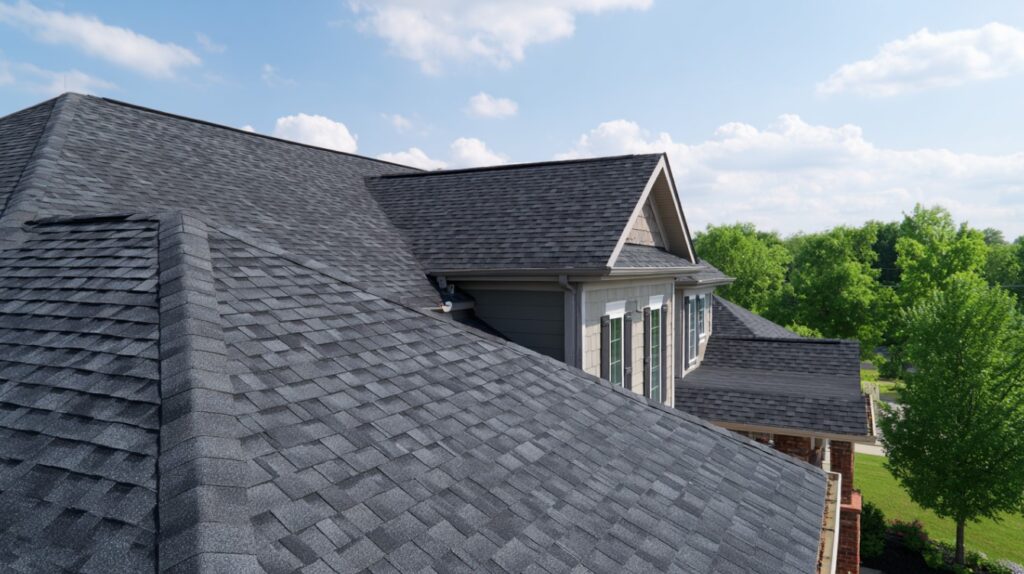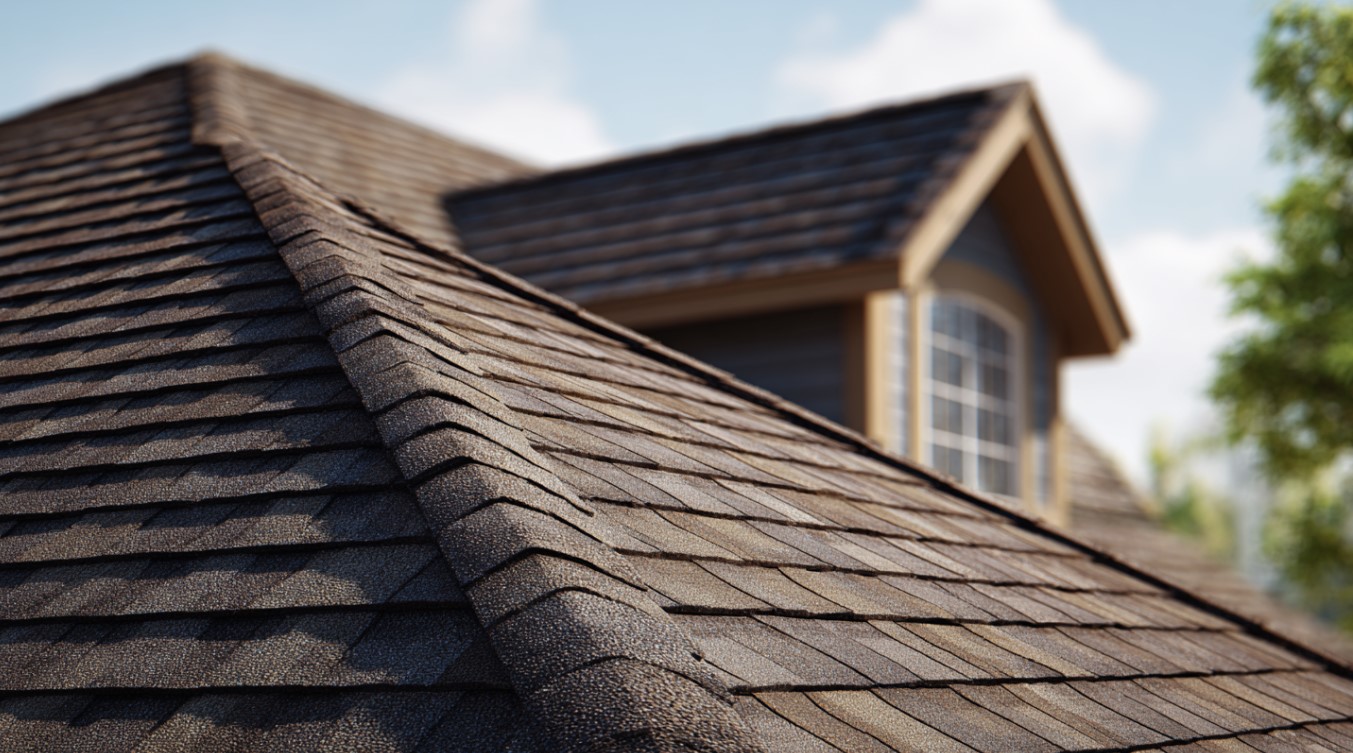When storm season hits Oklahoma City, homeowners often find themselves decoding unfamiliar roofing terms. If a contractor mentions “flashing issues near your valley” or talks about your roof’s pitch without explanation, you’re not alone.
Understanding roofing terms, contractor lingo, and the key parts of your roof structure isn’t just helpful—it’s essential to making informed decisions. Whether you’re reviewing an estimate, dealing with an insurance adjuster, or just trying to plan ahead, this guide helps you cut through the jargon.
Here’s what we’ll cover:
- Common roofing terms contractors use (and what they really mean)
- What each part of your roof structure does
- How to spot red flags in roof bids or inspections
- What to ask before approving repairs or replacements
Confused by roofing lingo? You don’t have to be. Honor Roofing & Construction explains everything clearly—before the work even begins.
Why This Matters in Oklahoma
Between hailstorms, strong winds, and drastic seasonal swings, Oklahoma roofs take a beating. After a storm, your first call is usually to a roofer or your insurance company—and those conversations are full of technical phrases that might catch you off guard.
By knowing the basics of your roof’s construction, and understanding common contractor jargon, you’re better equipped to:
- Understand estimates and scopes of work
- Ask the right questions
- Avoid paying for work you don’t actually need
Plus, following Oklahoma’s roofing codes requires compliance with certain materials and installation techniques. If a contractor isn’t clearly explaining what they’re doing—or why—it’s time to press pause.
Before You Call: A Few Things to Know
You don’t need to become a roofing expert before calling a contractor—but it helps to know:
- The approximate age of your roof
- Whether your roof is steep or low-slope
- Any recent damage (wind, hail, or leaks)
- HOA or permit requirements in your area
- Whether you might need financing
Once you’ve got those basics down, you’ll be in a much better position to review bids, timelines, and materials with confidence.
Roofing Terms Explained in Plain English
Here’s a quick breakdown of the most common phrases you’ll hear during inspections or estimates—and what they really mean.
Roof Decking
The base of your roof. Typically made of plywood or OSB, decking supports the entire roof system. If it’s rotted or soft, it’ll need to be replaced during any major repair.
Underlayment
A protective barrier between your decking and shingles. Think of it as the backup waterproofing layer. Terms like “felt,” “synthetic,” or “ice-and-water shield” all refer to underlayment types.
Flashing
Metal pieces used to waterproof transitions—like chimneys, valleys, or wall intersections. Poorly installed flashing is one of the most common sources of leaks in Oklahoma homes.
Drip Edge
This metal trim runs along your roof’s edge and helps water drain into the gutter—rather than into your fascia board. It’s required by most local building codes.
Fascia & Soffit
- Fascia is the vertical board behind your gutters.
- Soffit is the vented material under the roof overhang.
Together, they ventilate your attic and help prevent moisture damage and mold growth.
Ridge, Hip, and Valley
- Ridge: Where two roof slopes meet at the top
- Hip: Where two exterior roof slopes intersect
- Valley: The internal corner between two slopes, channeling water runoff
Understanding these roof structure elements helps you read bids and spot cutting corners.

Why It’s Important to Know the Basics
Here’s the bottom line: you don’t need to memorize every roofing term, but you do need to understand what’s being proposed or repaired.
A few reasons why this matters:
- Material shortcuts can void your manufacturer warranty
- Code violations can result in failed inspections or resale issues
- Miscommunication can lead to unnecessary repairs or mismatched materials
Whether you’re planning ahead or dealing with damage now, understanding your roof structure helps protect your investment.
Need more info about full replacements and installation options? Check out our blog ‘The Ultimate Oklahoma Homeowner’s Guide to Roof Replacement.’
Common Roofing Questions from Edmond & OKC Homeowners
What is roofing underlayment and why is it important?
Roofing underlayment is the water-resistant barrier installed between the shingles and the decking. It’s important because it acts as a backup layer of protection—helping prevent leaks if your shingles lift, shift, or fail during high winds or storms.
What’s the difference between fascia and soffit?
The difference between fascia and soffit comes down to location and function. Fascia is the vertical board behind your gutters, while soffit is the underside of the roof overhang. Together, they help ventilate the attic and protect your roof edges from moisture and pests.
Why does roof pitch matter for installation?
Roof pitch matters because it determines the slope of your roof, which impacts everything from water drainage to material choice and installation techniques. Steeper pitches often require different fastening methods and safety considerations during the install.
What’s the most overlooked part of a roof structure?
The most commonly overlooked parts of a roof structure are flashing and valleys. These areas handle a lot of water flow and are frequent leak points if improperly installed. Always ask your contractor how they plan to address these sections.
How can I tell if a contractor is using proper materials?
To tell if a contractor is using proper roofing materials, ask them to explain their product selection and show documentation. A trusted roofer won’t hide behind contractor jargon—they’ll walk you through the options clearly and show you how those choices impact durability, code compliance, and warranty coverage.
Speak the Same Language as Your Roofer
Understanding roofing terms and the basic parts of your roof structure doesn’t mean you’re taking on the job—it just means you’re protecting your home. Knowing what contractor jargon really means helps you avoid confusion, miscommunication, and unexpected costs.
At Honor Roofing & Construction, we walk every client through their roof step-by-step. We don’t expect you to speak the lingo—but we’re happy to translate it for you.
Schedule your free inspection today, and we’ll walk your roof, explain what we see, and give you honest answers—no pressure, no guesswork.


